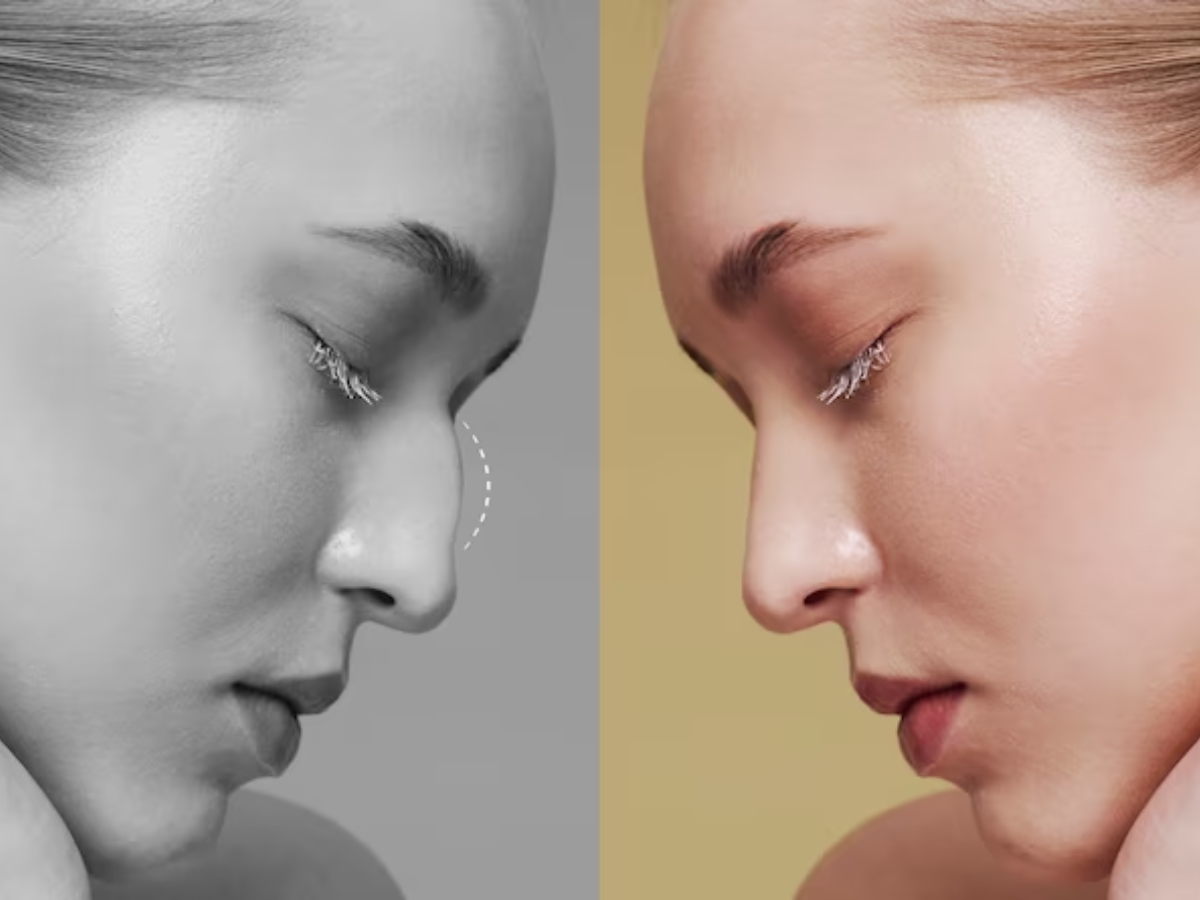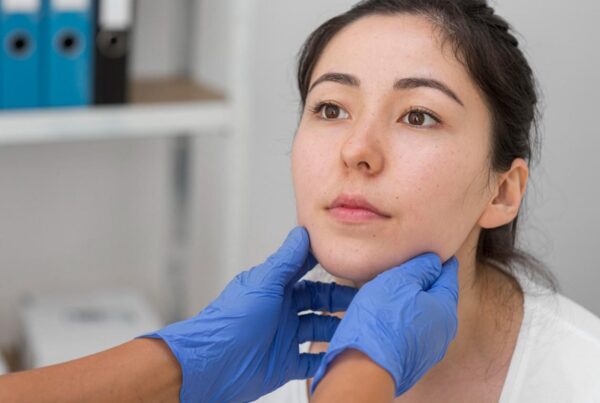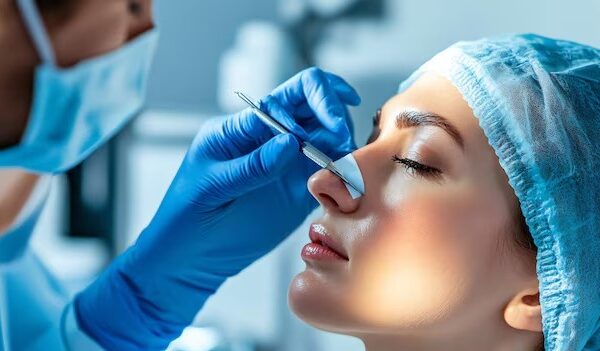Difference Between Septoplasty and Rhinoplasty – A Complete Guide
Rhinoplasty and septoplasty are two such nose surgeries that often get mixed up. However, they are completely different and aim to solve distinct issues related to one’s nose. In simple words, septoplasty (deviated septum surgery) fixes issues inside the nose, whereas rhinoplasty (infamously known as a nose job) changes its outside appearance.
Clearly understanding what each of these nose procedures does will help you choose the right surgery for you.
Difference Between Rhinoplasty And Septoplasty – The Best Choice For Your Nose
What is Septoplasty?
The nasal septum is the wall between the nostrils, made of bone and cartilage that hold the shape. Sometimes this wall can get crooked or off-center. This is called a deviated septum. It clogs up one side of the nose. This can block airflow and make breathing tough. Septoplasty, or deviated septum surgery is a procedure to straighten and fix a deviated septum. The septorhinoplasty surgeons cut the nostril to reach the crooked wall. Then they straighten it out and remove any blockages. This opens up the nasal passages, so you can breathe freely again.
Septoplasty Benefits:
The main benefit of septoplasty is better breathing. Straightening the nasal wall opens up your airways. This can relieve deviated septum sympyoms like stuffiness, sinus infections, snoring, or trouble breathing while sleeping. Additionally, septoplasty is, in most cases, an outpatient procedure. You go home the same day. The recovery time from this surgery is fairly quick, too. Most people get back to normal in a week or so. When done right, the results are immediate and long-lasting. Your breathing improves right after, and it stays better.
What is Rhinoplasty?
A nose job, also called rhinoplasty, is plastic surgery to reshape your nose. It can change the size, shape, bridge, tip, nostrils, and overall look of your nose. Rhinoplasty doesn’t fix any breathing issues from a deviated septum – it only changes the appearance.
During the surgery, the doctor makes incisions to access the bone and cartilage that give shape to your nose. The doctor then sculpts, removes, or repositions these structures to achieve the look you want. Once the reshaping is done, the cuts are closed up, and splints and bandages are put on to protect your nose while it heals after the surgery.
Rhinoplasty Benefits:
While a nose job doesn’t improve breathing, it has cosmetic benefits. It can help balance out your facial features and make your face look more harmonious.
For people unhappy with the appearance of their nose, rhinoplasty can be a real confidence booster. Whether reducing a large, hooked nose or smoothing out a bulbous tip, most patients are very pleased with the cosmetic improvements.
That’s why, year after year, it remains one of the most popular cosmetic surgeries sought after.
What Hurts More: Rhinoplasty or Septoplasty?

A nose job (rhinoplasty) usually causes more pain and takes longer to recover from than a septoplasty alone. But neither surgery is extremely painful for most patients. Rhinoplasty helps re-shape the actual structure of your nose, so it’s a longer procedure than just fixing a deviated septum like in septoplasty. One might go through swelling, bruising, and tenderness after a rhinoplasty.
With septoplasty, the first week after surgery is when you’ll have the worst pain and congestion as the incisions inside your nose heal. After a nose job, it takes many months for all the swelling to fully go away. The pain slowly improves by the first couple of weeks, but it takes 3–6 months before all the bruising and swelling reduces altogether. In some cases, swelling may persist for up to a year. A patient who takes up a nose job needs to avoid strenuous activity and protect their nose throughout the recovery period.
Both rhinoplasty and septoplasty are not very painful procedures; however, rhinoplasty has a longer recovery time before you see the final results of an improved nose appearance.
Rhinoplasty And Septoplasty Cost – Is Rhinoplasty More Expensive Than Septoplasty?
When considering rhinoplasty and septoplasty cost, it is important to understand your requirements, whether you want a better-looking nose or if you are suffering from a deviated septum. Rhinoplasty needs some extra surgical work to alter the shape of the nose, which means added complexity and time. Rhinoplasty costs more because it is a more difficult operation that requires greater skills. Septoplasty may sometimes be covered by insurance; however, rhinoplasty, being a cosmetic procedure, is not covered by insurance in most cases.
Rhinoplasty is also pricier than septoplasty due to the higher operating room, anesthesia, and surgical facility fees. Different types of medications and supplies also contribute to the higher costs. While both surgeries aim to improve nasal function, rhinoplasty only focuses on cosmetic issues. Patients looking for aesthetic enhancements for their noses need to pay more for the rhinoplasty procedure. Whereas, septoplasty is a purely corrective procedure that costs less. However, for those unhappy with their nose’s appearance, the added rhinoplasty costs are usually worthwhile.
Can You Have Rhinoplasty and Septoplasty Together?
Rhinoplasty and septoplasty may be carried out during the same session in certain cases. When an individual has issues that are both functional and cosmetic, this could happen. A person who suffers breathing difficulties because of a deviated septum may decide to alter the size or shape of their nose. It is important to note that a septorhinoplasty cost will be considerably higher as compared to any one individual procedure. The septorhinoplasty healing time may vary depending on the intensity of your procedure.
When both rhinoplasty and septoplasty are carried out at the same time, the surgeon can manage form as well as function during a single recovery period. While the rhinoplasty delivers the desired aesthetic result, the septoplasty helps solve issues with the deviated septum. For the right patient, this combination of techniques could be a great option.
In addition, structural problems may require a surgeon to perform a septoplasty along with a rhinoplasty. The septum might have to be altered during rhinoplasty to support the new framework, even if there is no deviation.
The Takeaway
Understanding the difference between rhinoplasty and septoplasty enables patients to choose the operation that best meets their needs and aspirations. Septoplasty corrects nasal breathing problems, whereas rhinoplasty improves appearance. In some instances, both may be justified together. The best approach to assessing whether one or both treatments are appropriate for you is to have a thorough discussion with an experienced plastic surgeon like Dr. Smiley.




